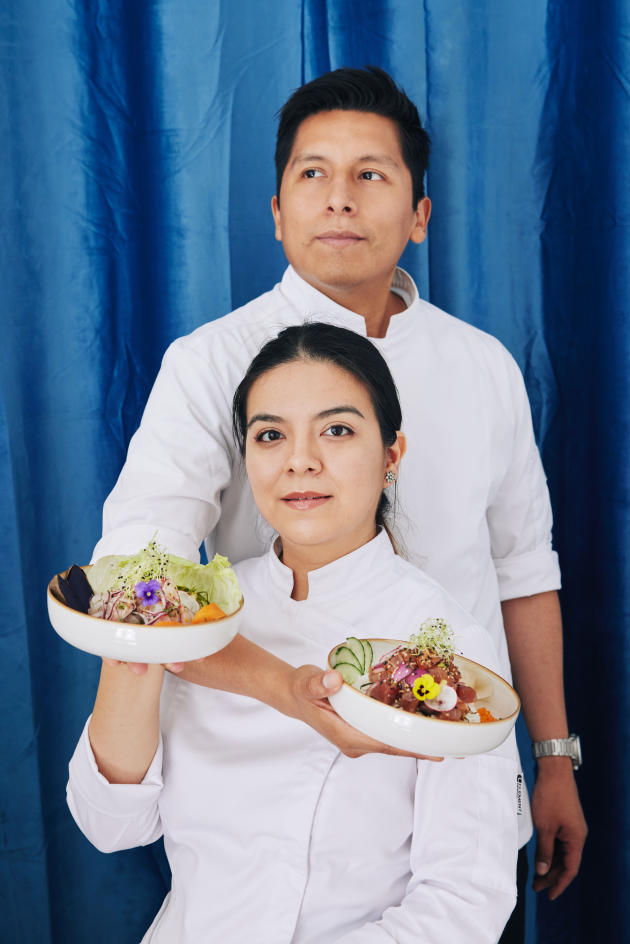Ceviche, a street food dish? In France, it’s hard to imagine it, because we know it more in the form of a refined and not very nourishing starter. To make the “real” Peruvian ceviche better known to French palates, Javier Jimenez Morales and Claudia Perez Vasquez-Solis opened The 3 Musketeers. A discreet sign in the Latin Quarter, in Paris, especially designed for delivery or take-out, but where a tiny counter allows the stroller to eat this dish as in Peru: standing up, on the go.
Javier Jimenez Morales, 37, studied cooking and restaurant management. He set up his pastry shop in Peru and worked in gourmet restaurants in Japan before settling in Paris. Claudia Perez Vasquez-Solis, 30, attended Le Cordon Bleu cooking school in Lima. A grant took her to Spain, then to Paris, where she met Javier Jimenez Morales, whom she decided to support in his restaurant project, with one idea in mind: to offer quality street food, like in Lima, where they were born.
In France, we don’t imagine that ceviche is a street food dish…
Javier Jiménez Morales: And yet yes! In Peru, it is served in small kiosks, where a cook comes with his preparations already made: cut fish, tiger leche sauce, sweet potatoes, white corn. All you have to do is put them together in a tray. Customers often eat standing up, facing a counter, with a plastic spoon with small teeth to catch the fish and the sauce well.
Claudia Perez Vasquez-Solis: Historically, it is really the dish of the workers. More than two thousand years ago, before the Incas, there were the Moches, in northern Peru. When they went fishing at sea in their small boats, the totoras, they ate ceviche. Back then, they didn’t mix the ingredients like they do today. They simply shelled the fish, licked a block of salt, took some seaweed and bit into a chilli. When the recipe reached the mainland, it was adapted: the Moches added tumbo, a very acidic indigenous fruit, with which they marinated the fish for two or three minutes.
Gastronomy in the spotlight at the 9ᵉ World Festival
Debate, exchange, learn but also dance, listen, taste… From September 15 to 17, 2023, the journalists of the editorial staff welcome you to the headquarters of the Worldin the 13e district, for the 9e sound editing festival.
To meet the journalist Léo Pajon, follow him on a gastronomic journey in the 13e district, from Frigos to the tables of Alessandra Montagne, but also discover on the forecourt of our building a culinary world tour, from Thailand to Argentina, do not miss the 9e edition of the Festival du Monde, from September 15 to 17.
Ticketing and programming to discover on Festival.lemonde.fr.
In 2004, the Peruvian government declared ceviche “cultural heritage of the nation”, but its origins are debated…
CP V.-S. : It is above all the origin of the word “ceviche” that is debating. Some say it comes from Quechua siwichi, “tender fish”. Others affirm on the contrary that the origin is Spanish, it could have the same etymology as the term “escabèche”, which comes from Mozarabic iskebech, designating a dish cooked in vinegar. Beyond the etymology of the word, we know that it is an ugly dish, and this is the reason why it is found throughout Latin America: the Moches were colonized by the Incas, who adopted ceviche and spread it to Colombia, Ecuador, Chile and even part of Brazil. Where so many different ways to prepare it have been invented.
You have 51.78% of this article left to read. The following is for subscribers only.
